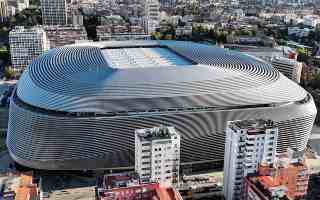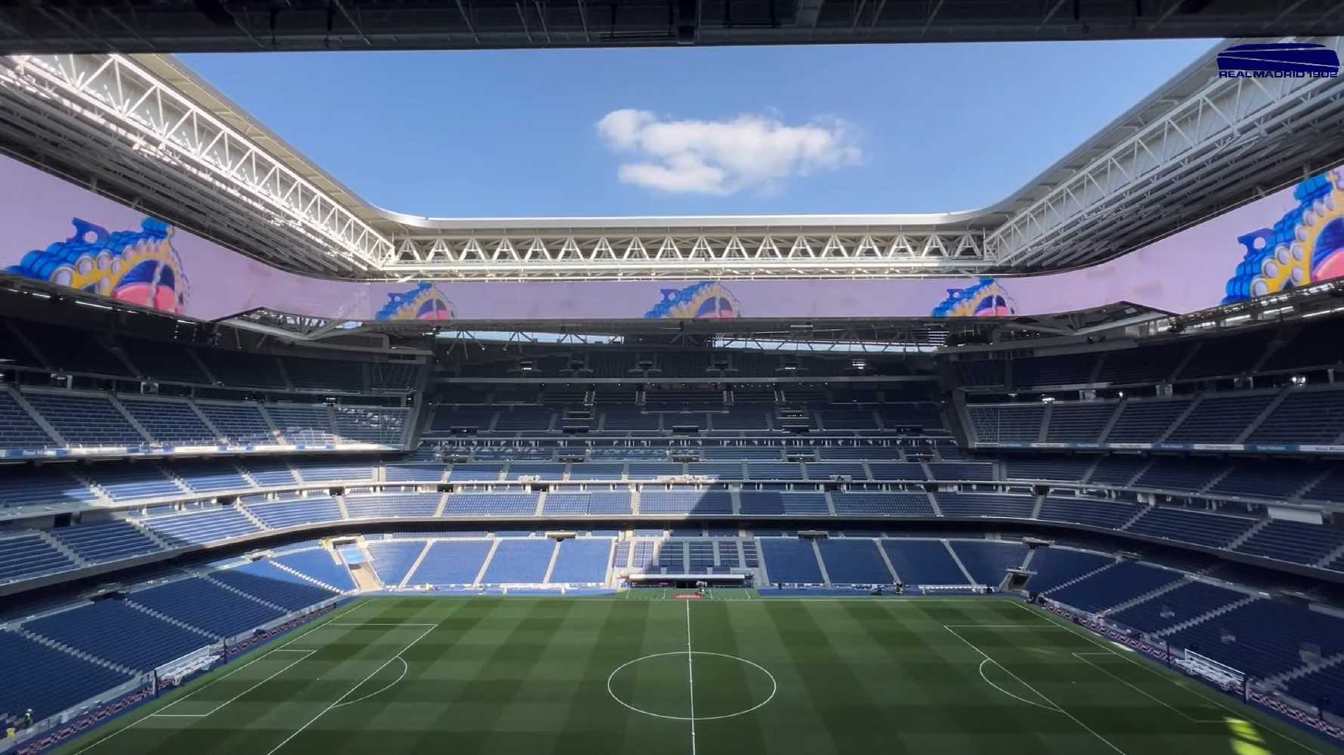Spain: Bernabéu - the royal gem in the heart of Chamartín
source: StadiumDB.com; author: Paulina Skóra
 This stadium needs no introduction, but it’s certainly worth presenting. Estadio Santiago Bernabéu is the home of Real Madrid – one of the most successful and popular football clubs in the world. Will it be named the best stadium opened in 2024?
This stadium needs no introduction, but it’s certainly worth presenting. Estadio Santiago Bernabéu is the home of Real Madrid – one of the most successful and popular football clubs in the world. Will it be named the best stadium opened in 2024?
Advertisement
The staggering cost of modernizing the legendary stadium
The stadium was inaugurated in 1947, right next to Real Madrid's previous venue, Estadio de Chamartín. While it was initially surrounded by open spaces, today, it stands in a densely built-up part of the city. From the beginning, Bernabéu was distinguished by its tall, steep stands, with a large portion of the seating area covered. The main stand had a different character from the others, and the four spiral towers at the stadium's corners stood out in its exterior design.
Over the years, the venue has undergone several significant renovations. The latest reconstruction, which began in 2019, cost over one billion euros, making it one of the most expensive stadium renovations in history. This revamped home of the Los Blancos
is competing in this year's edition of our Stadium of the Year contest – we encourage you to vote!
Open to fans despite ongoing work
On May 8, 2019, Real Madrid announced that FCC Construcción had been selected as the general contractor for the renovation. Work began that same month. According to the contract, the contractor had 39 months to complete the project, until August 2022, plus an additional four months to finalize external works. The original plan aimed for completion in December 2022 to coincide with the stadium’s 75th anniversary. Ultimately, the deadline was not met. Delays were caused by factors such as the COVID-19 pandemic, the war in Ukraine, and modifications to the project. Paradoxically, however, the pandemic accelerated some aspects of the work, as Real Madrid did not play at Bernabéu for a year and a half (from March 2020 to September 2021), giving construction workers more freedom.
As the schedule significantly extended, a new completion date was set for December 23, 2023. This deadline was also not met, and the official reopening was postponed multiple times. According to the latest reports, the finalization of work is expected before the summer of 2025. It will be a spectacular event, befitting Real Madrid, but the stadium remained in use for nearly the entire renovation period – except for the previously mentioned break from March 2020 to September 2021. From 2024 onward, the work is mainly finishing touches, and both fans and players can already enjoy the modernized Bernabéu.
The new look of Estadio Santiago Bernabéu and other stadiums nominated in the Stadium of the Year contest can be seen in the video below:
What does the renovated home of Real Madrid look like?
The stadium’s transformation introduced cutting-edge architectural and technological solutions. The façade is made of curved stainless steel panels that dynamically reflect light and can adapt their appearance to different events through an integrated audiovisual system. The stadium now features a modern roof, consisting of a fixed section (28,000 m²) and a retractable one (8,000 m²). This mechanism allows for the venue to be used in all weather conditions. An innovative turf storage system was also implemented – the pitch, divided into six massive segments, can be automatically moved to an underground Hypogeum storage area. This allows the stadium to host various events, such as concerts and exhibitions, without risking damage to the playing surface.
A massive 360° screen has been suspended under the roof, encircling the pitch and providing top-tier image quality. Its unique shape resembles a truncated cone. The stadium has also been enhanced with Skywalk 360° – a glass observation path on the highest level, offering panoramic views of Madrid. Nearby, an exclusive Skybar with a VIP restaurant serves as a prestigious hospitality area during matches.
The stadium’s logistics have been improved with an underground delivery system that enhances transportation efficiency without disrupting public spaces. The eastern stand has gained an additional 3,000 seats, and all stadium chairs have been replaced with foldable, more comfortable navy-blue seats. Accessibility for people with reduced mobility has also been improved by removing architectural barriers and creating new entrances and facilities.
New recreational, VIP, and dining areas have been added for fans. The club museum has been expanded with an interactive exhibition, and Bernabéu Market – a luxurious food market inspired by Asian metropolises – has been introduced. The surrounding area has also been revitalized, featuring new plazas, green spaces, and a five-level underground parking garage for over 500 vehicles.
Where is the stadium located?
Estadio Santiago Bernabéu is situated in the Chamartín district, a few kilometers north of central Madrid. The nearest metro station is Santiago Bernabéu on line 10. The stadium occupies a block bordered by Paseo de la Castellana, Concha Espina, Padre Damián, and Rafael Salgado streets. An interesting fact is that a railway tunnel runs beneath the stadium, with its upper edge, in the shallowest section, located about a meter below the pitch. It is the oldest of the three tunnels connecting Chamartín and Atocha stations, having been opened in 1967.
Advertisement

 StadiumDB
StadiumDB
